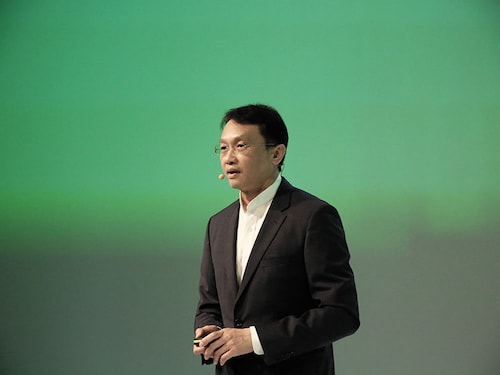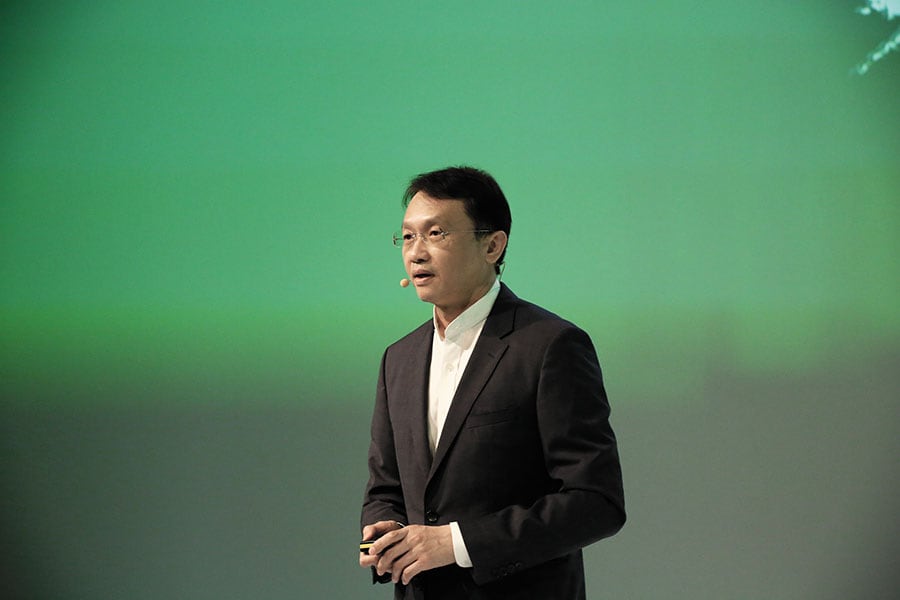Acer: Get in the game
Jason Chen has Acer refocussed on PCs but aimed at consumers of higher-end hardware


 We need our own R&D. Most companies in Taiwan do product development. They don’t do research, says Acer CEO Jason Chen
We need our own R&D. Most companies in Taiwan do product development. They don’t do research, says Acer CEO Jason Chen
Image: Jakob Ratz/Pacific Press/Lightrocket via Getty ImagesJason Chen had spent 23 years in big global tech, but when Acer’s board of directors asked him how he would turn the ailing Taiwan icon around, he paused. “I said, ‘I’ve never done that’, and the next question was, ‘How are you going to do it?’” Chen recalls.
Chen landed the job and in over four years has turned the company around. Recent quarters have seen sizeable jumps in revenue and profitability, to levels not seen since the PC maker was making Forbes Asia’s Fab 50 list of best companies in 2010. (In recent years it hasn’t even qualified for our Global 2000 ranking of biggest firms.)
Chen, 56, has accomplished this largely by getting Acer back to what made its name: Personal computers. You know, those boxes you thought had been supplanted by smartphones. And he’s done it not by trying to undersell the many bottom fishers in the sector—Acer had acquired a rap as a low-cost brand—but by developing technology that appeals foremost to the most critical market for high-end hardware: Gamers.
Chen came on as corporate president and CEO in 2014. He had just finished nine years as corporate development vice president at Taiwan Semiconductor, following 14 in sales and marketing jobs at Intel. Acer had lost money since 2011 as global PC sales slowed and Italian-born CEO Gianfranco Lanci suddenly quit over internal discord. Revenues in 2013 came to $11.8 billion, down by 16 percent over the previous year, and net losses totalled $370 million. Acer founder Stan Shih, whose family owns a 5 percent stake in the company, called 2013 a year of “business underperformance”.
Shih now consults with Chen and backs what he’s doing. The firm dropped its smartphone line two years ago because it was losing money. From 2014 Acer had peddled Iconia-brand phones, including a $270 handset designed for serial travellers with space for three SIM cards.
Part of the shift was refocusing staff. The other was repositioning in the marketplace. “The first thing I believed when I came in was to advocate a clear direction,” Taiwan-born-and-bred Chen says in fluent English at the company’s suburban Taipei headquarters. “The biggest problem at the time that I saw was our brand position.”
Vying for the cheapest PC prices simply felt “cheap”, Chen says. “It was the result of the overemphasis on market share. You focus on market share and you just go lower, lower and lower. Innovation needs money, R&D, and we’re cheaper and cheaper until nobody’s making money. Who suffers? Users suffer, and the industry suffers.”
Chen has pushed particularly to develop the Predator and Nitro lines of gaming PCs, including the world’s most expensive made-for-gamers notebook: The $9,000 Predator 21X. It weighs 8.8 kilograms and comes with a suitcase. Gaming PCs worldwide will be worth $32.9 billion this year, market intelligence firm Newzoo forecasts, as players spend 13 percent more—that’s $138 billion—than last year.
undefinedRecent quarters have seen sizeable jumps in revenue and profitability, to levels not seen since Acer was making Forbes Asia’s Fab 50 list of best companies in 2010[/bq]
Predator machines, the CEO says, exemplify Acer’s post-reform focus on proprietary technology. Some use metal fans instead of old-style plastic ones to improve ventilation. Acer has grabbed 300 patents for its own “thermal technology” to cool processors without slowing them down, Chen adds. Desktops use EMI shielding technology to stop components inside a PC from interfering with other devices or endangering a user’s health.
Acer’s PC unit is growing, and gaming units make up a “high teen” share of the company’s gross margin, Chen says. The company won’t say how much gaming devices contribute to overall income. But this is no longer a volume play: Acer’s industry rank in PCs fell from No 4 in the world (even in its slump years) to No 6 last year on declining quarterly shipments and back to No 5 by mid-2018 at 4 million units sold, according to data from market research firm Gartner.
Under Chen, Acer also formed a research and development unit that gets 1 percent of company revenues. “We need our own R&D,” he says. “Most companies in Taiwan do product development. They don’t do research.” The R&D unit is Acer’s first since it separated 14 years ago from Wistron, which now assembles electronics for the likes of Apple. The R&D budget has increased by 50 percent over the past four years.
Besides pushing on the game-player front, the R&D team is looking into artificial intelligence schemes—for example, to help taxi drivers find waiting passengers or to guide any driver to empty parking spaces. About 200 people work in research alone, an outlier as Chen sees it.
Acer hasn’t given up its foothold in the education sector. It still develops tablets under the Iconia brand. But the tablet Chen likes to tout is the world’s first that runs on Google’s cloud-based Chromebook operating system. Acer introduced the Tab 10, for students, this year after more than a half-decade of making Chromebook PCs and taking a leading share of those in 2017.
Chen deserves credit for “getting the company back on its feet”, says Bryan Ma, devices research vice president for IDC in Singapore. But he cautions that gaming devices might not drive income over the long term. “What gets tricky is the fact that the PC market today is largely being driven by commercial sales rather than consumer, the former of which Acer is the underdog in when compared to giants like HP and Dell,” Ma says. “Acer, of course, can still carve out a niche in segments like gaming, but it’ll require some very focussed marketing, on which other vendors are prioritised, too.”
Acer has a game plan for the mass non-gaming market, including professionals who work in different places throughout the day. It calls for making notebooks thinner and lighter without a hit to processor speed, Chen says. He bills the 14-inch Swift 7 notebook as “the thinnest computer in the world” at less than 1 centimetre top to bottom when the screen is folded down. The Swift 5 also weighs an unusually light 990 grams. “Even though they are thin, they are robust, solid,” he says.
A good salesman has to be an optimist, and Chen sometimes must face off against the frustrations of the technologists among his staff of 7,900. “The biggest headache? People keep telling me problems,” Chen says. “I keep ignoring them. That’s my style, to focus on the bright spot, the opportunities.”
First Published: Nov 26, 2018, 11:23
Subscribe Now